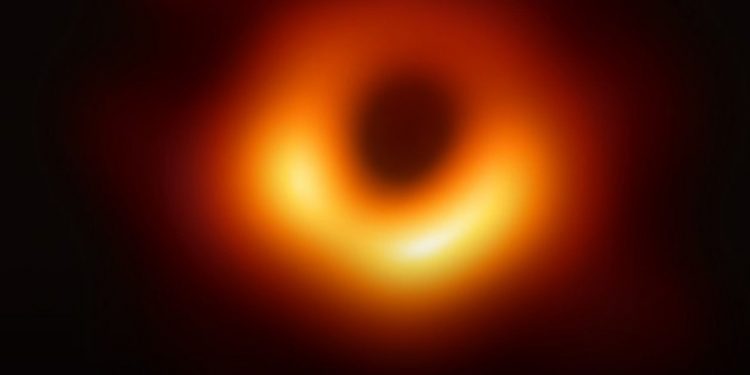Nikunja Bihari Sahu
For decades, black holes have fascinated us owing to their mysterious and elusive nature. They have caught the fancy of science fiction writers and Hollywood film-makers, who have portrayed them as strange and eerie worlds where nobody can survive. A black hole is not a hole, but a region in space where huge amounts of matter gets packed densely, immensely raising its gravitational pull. A black hole is surrounded by a region called Event Horizon — the point of no return — beyond which no matter and energy can escape, making it practically invisible. If a luckless passenger happens to be captured by a black hole, his body will be stretched enormously and torn into infinitesimal pieces and, eventually, gobbled up by the black hole.
For years, scientists have struggled to capture one of these deadly masses on camera, since the absence of light renders them unseeable. However, a team of scientists of the international Event Horizon Telescope (EHT) project recently captured an image of a black hole in a distant galaxy for the first time and made it public. Named Powehi, which means “adorned fathomless dark creation”, the body is located at the centre of the M87 galaxy and is more than 55 million light years away from Earth.
Named Powehi, which means “adorned fathomless dark creation”, the body is located at the centre of the M87 galaxy and is more than 55 million light years away from Earth
That means, the distance is so vast that if light leaves the body, it will take about 55 million years to reach the Earth. It is estimated to be 6.5 billion times more massive than the Sun.
It should be understood that this was not a direct photograph of the black hole as no technology can capture the actual photograph, owing to its very definition; rather, it is the silhouette of the black hole as seen against the background glow of the galaxy. Moreover, the black hole is found to be ravenous, sucking in matter and blowing out jets of supercharged particles that approach light speeds and extend for 5,000 light years. In the words of the astronomers, the black hole was really a monster.
Because a black hole devours light and other radiations, catching it on a camera is impossible. However, the hot disk of material that encircles it shines brightly. Against the bright backdrop of this disk, a black hole appears to cast a shadow. The stunning new image shows one such shadow of the super-massive black hole. Catching its shadow from such an incredibly vast distance was no means an easy job. Instead of building a single large telescope that would collapse under its own weight, scientists connected 8 ground based telescopes around the globe to operate like a single telescopic system. Known as the Event Horizon Telescope (EHT), the array provided a large observational window, the size of our planet, capable of capturing unprecedented details over great distances.
The implications of this discovery are immense: First, the technology has made it possible to see the unseeable, which, in itself, is a victory of science. Secondly, this is direct evidence confirming the presence of a black hole. Third, it allowed us to test the validity of Einstein’s General theory of Relativity which is one of the pillars of modern Physics.
Fourth, it provided us with a new method of estimating the mass of a black hole. Last, it demonstrated the spirit of international cooperation in the field of astronomical investigation for unravelling the mysteries of nature.
Although black holes have remained mysterious to us, having the first image would enable the researchers to increasingly unfold their secrets. No one really knows how the bright ring around the hole formed or the more intriguing fact of what happens when an object falls into a black hole. Black holes remain a window to our understanding of the mysteries of the physical world by answering some of these questions regarding the subtle and complex majesty of our universe.
The writer is Education Officer, Dhenkanal Science Centre.






































